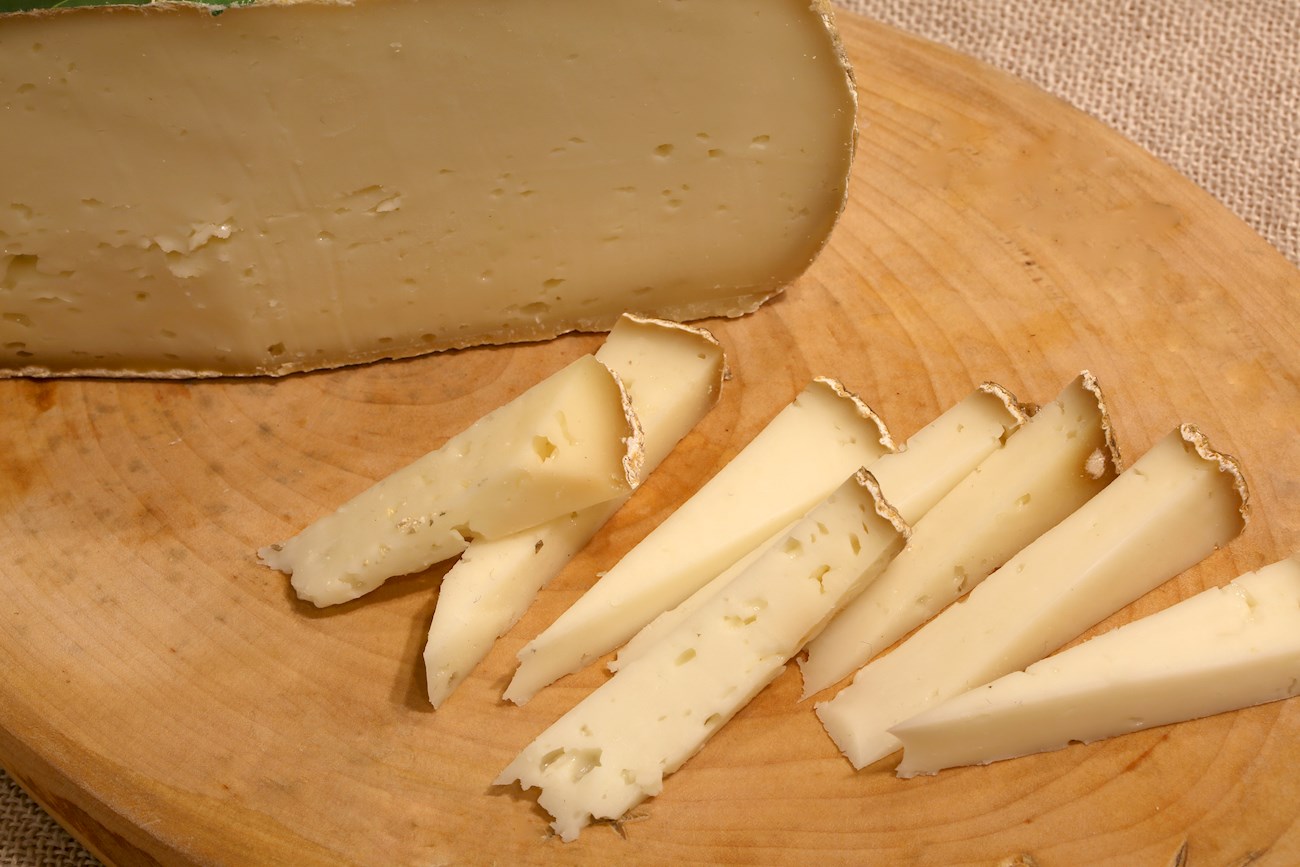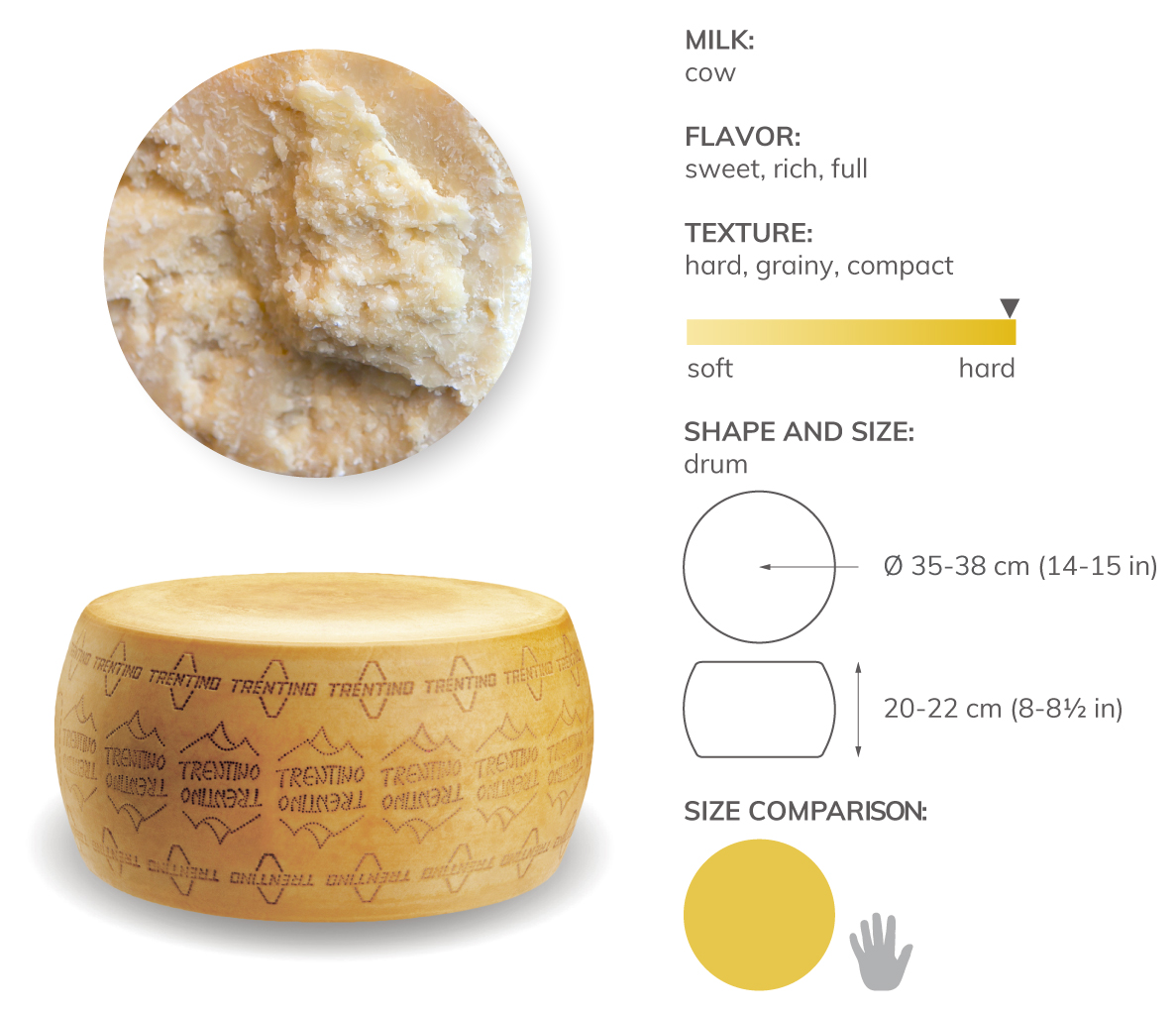Best Trento Cheese Types
Trentingrana is an Italian Grana cheese hailing from Trento. The cheese is made from raw cow's milk and it ages for 22 months. The rind is thick and dark yellow in color, imprinted with the word Trentino on each wheel. The texture is hard, grainy, and compact, while the flavors are sweet, rich, and full.
The aftertaste is floral and delicate, with herbaceous and grassy hints. The cheese has been produced since 1926. It's recommended to eat it as it is or grate it over pasta. Trentingrana can also be used in salads and served with fresh fruit. Pair it with sparkling white wines or full-bodied red wines.
Vezzena is a traditional cheese hailing from Trento, where it's been produced in the alpine farms of Lavarone, Vezzena, and Folgaria since the early 1900s. The cheese is made from June to September from partially skimmed raw cow's milk and it's usually left to mature from 12 to 24 months.
There are a few versions of the cheese – fresh, medium-aged, aged, and extra-aged (more than 24 months). The texture is semi-hard, creamy, open, and buttery, while the grainy texture can be found in aged versions. The flavor is pleasantly bitter, herbaceous, piquant, intense, and earthy.
Pair with
Caprino is a goat’s milk cheese made throughout Italy - the name derives from the Italian word capra, meaning goat. In the region of Trentino Alto Adige, it is produced mainly in the province of Trento, around Val di Fiemme, Predazzo, and Valli Giudicarie.
Made from pasteurized milk and kid or lamb rennet, Caprino Trentino is salted in brine and left to mature for at least 90 days. The crust gets hard and straw-colored, while the interior turns ivory-white, compact and greasy in texture. This delicious table cheese is best enjoyed paired with local red wines of medium alcohol content.
TasteAtlas food rankings are based on the ratings of the TasteAtlas audience, with a series of mechanisms that recognize real users and that ignore bot, nationalist or local patriotic ratings, and give additional value to the ratings of users that the system recognizes as knowledgeable. TasteAtlas Rankings should not be seen as the final global conclusion about food. Their purpose is to promote excellent local foods, instill pride in traditional dishes, and arouse curiosity about dishes you haven’t tried.





